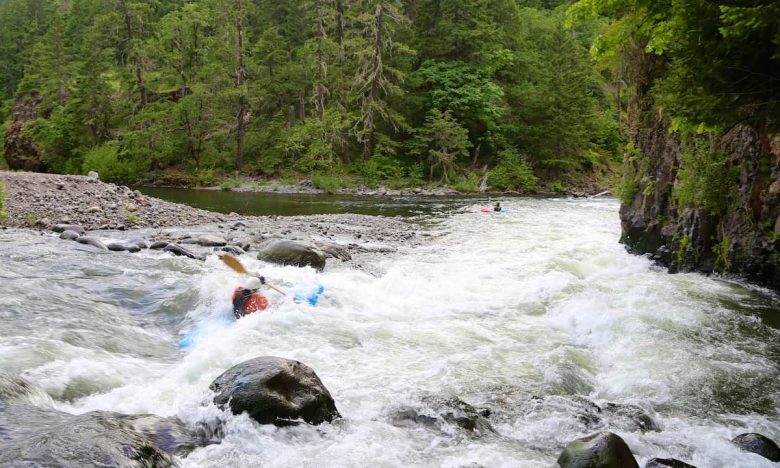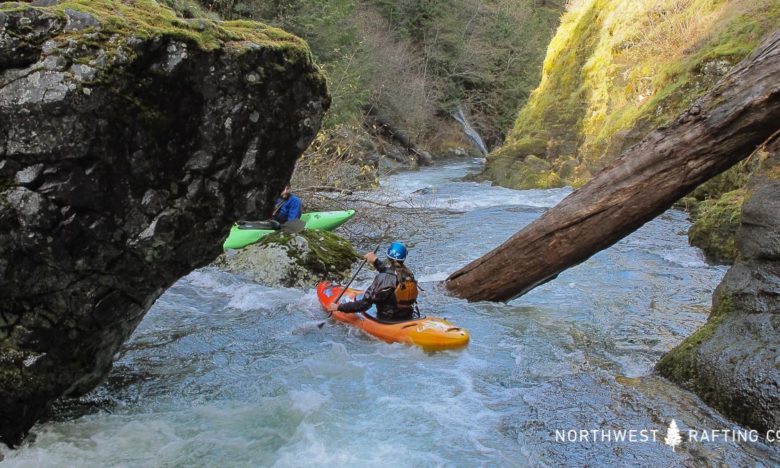The West Fork of the Hood River is the best Class IV run in the Columbia Gorge. It has consistently fun rapids, two beautiful basalt gorges, and is fun at a wide variety of flows. Most people take-out just above Punchbowl Falls, which is a great lower leg work out for kayakers and a rope challenge for rafters.
Length: 5.5 miles
Gradient: 82 fpm
Put-In: Lake Branch
Take-Out: Punchbowl Falls
Flow: 4.5 to 7 feet Hood River at Tucker Bridge. Class V at higher flows.
You’ll start your day by parking where Lost Lake Road crosses the Lake Branch. From here, walk downstream and put-in on the Lake Branch about a 100 feet before the confluence with the West Fork.
Upper Gorge
The first few rapids are Class IIIs, making for a good warm up. You’ll soon notice the beginning of the first basalt gorge, which has a few fun Class IV rapids. There is a logjam that should be portaged on the right in the middle of the first basalt gorge.
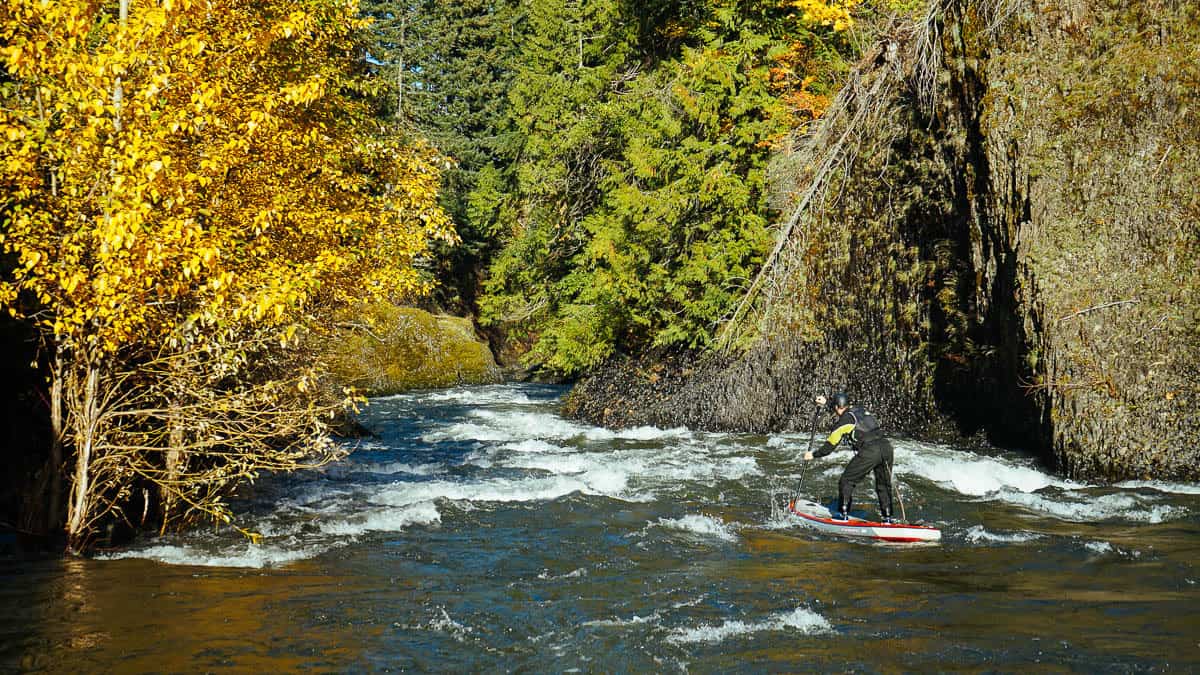
After the upper gorge, the whitewater eases up for a couple miles.
Fish Ladder Portage
At river mile 3 you’ll see a horizon line at the end of a long straight away. At medium flows (up to 7 feet) it’s pretty easy to stop on river left to portage around the fish ladder. At higher flows it will come up quick so be sure to pay close attention.
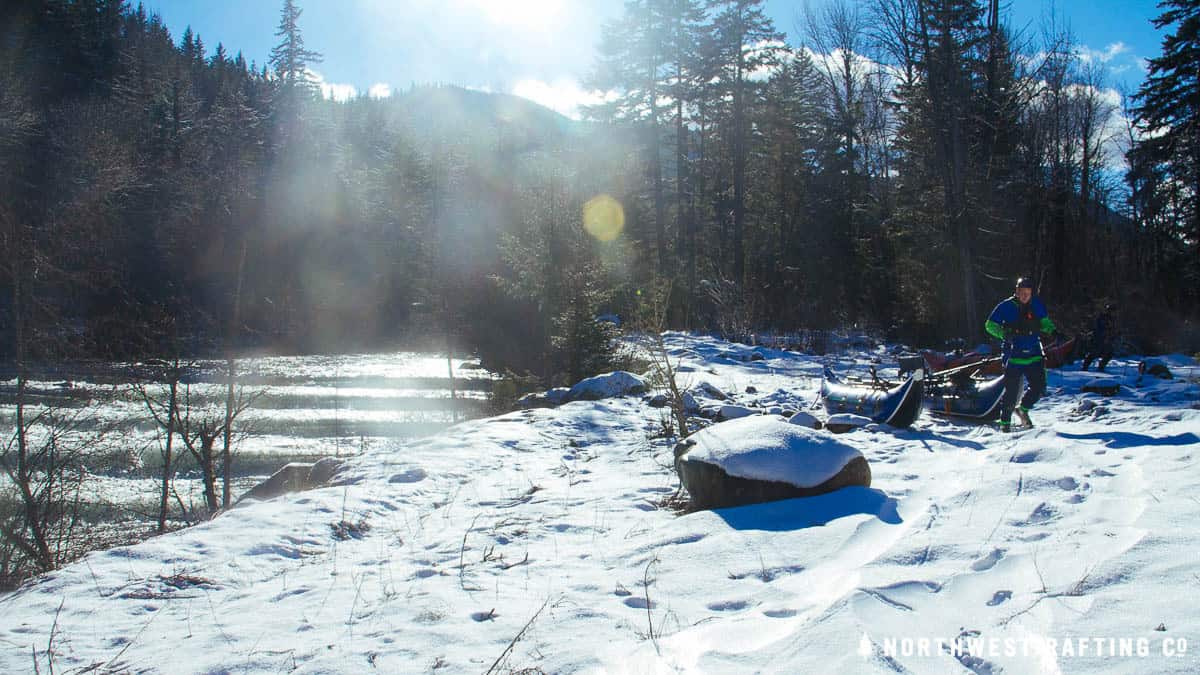
After the fish ladder the rapids start picking up in difficulty beginning with Boulder Drop (IV). This long rapid has many possible routes through boulders and is considered the most challenging rapid on the West Fork.
Lower Gorge
You enter the second basalt gorge after passing Green Point Creek, which enters from river left. The second rapid below Green Point Creek has a nasty hole that can be avoided by driving right into an eddy.
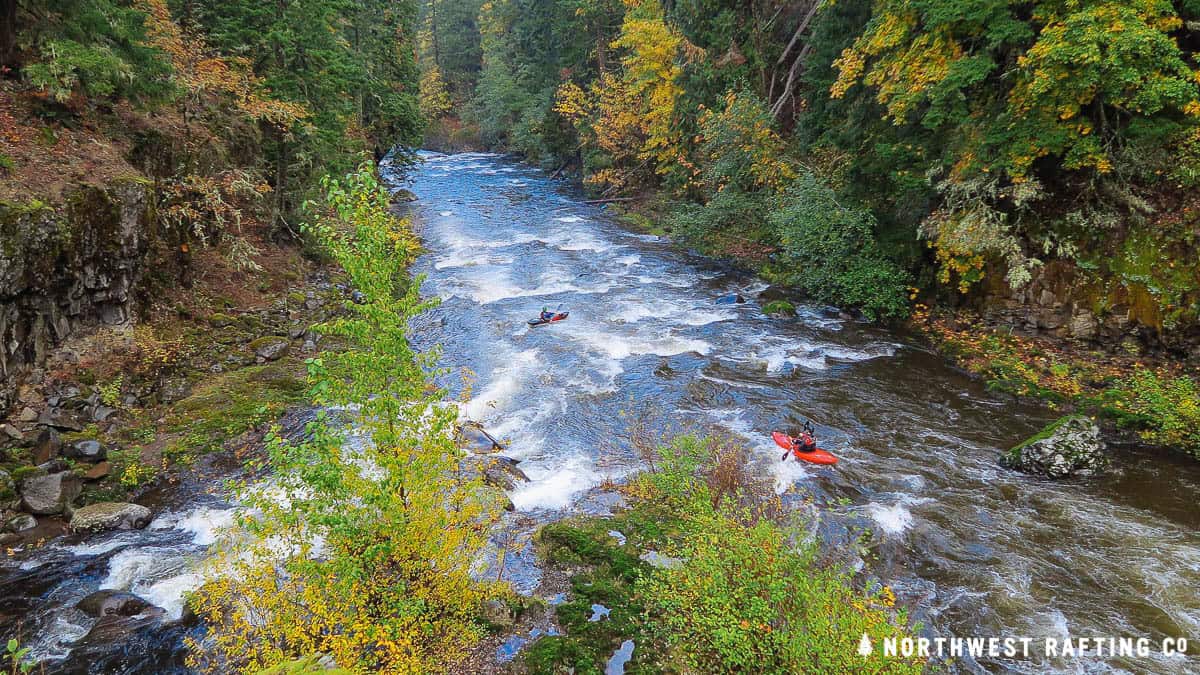
The final rapid goes under a tall bridge with tight canyon walls. Below here you should eddy out on the right if you want to avoid paddling over Punchbowl Falls.
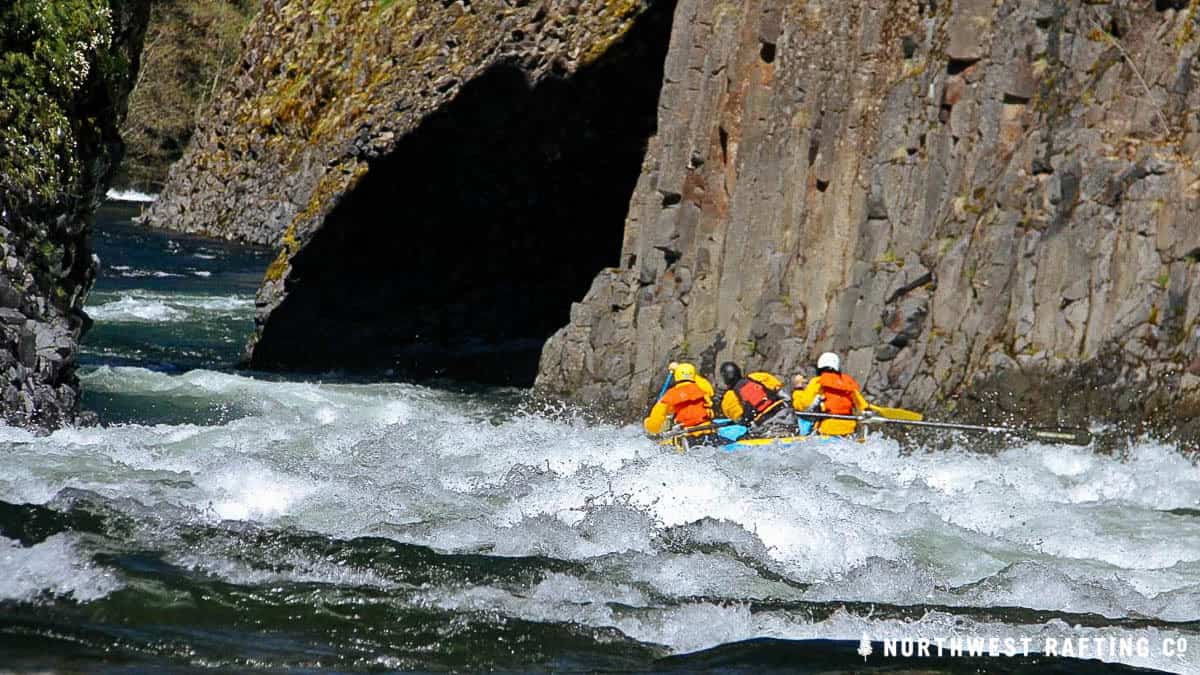
Take-out above Punchbowl Falls
Right after this pull over on river right to avoid going over Punchbowl Falls, a 10 foot waterfall with a deep, nasty hole. The take-out on river right is a good leg work out if you’re kayaking or a solid workout if you’re rafting. If you have rafts, I suggest running a 200 foot rope up to a pulley on a tree and have someone pull downhill on the rope. At the same time, have a few people walk the raft up the hill.
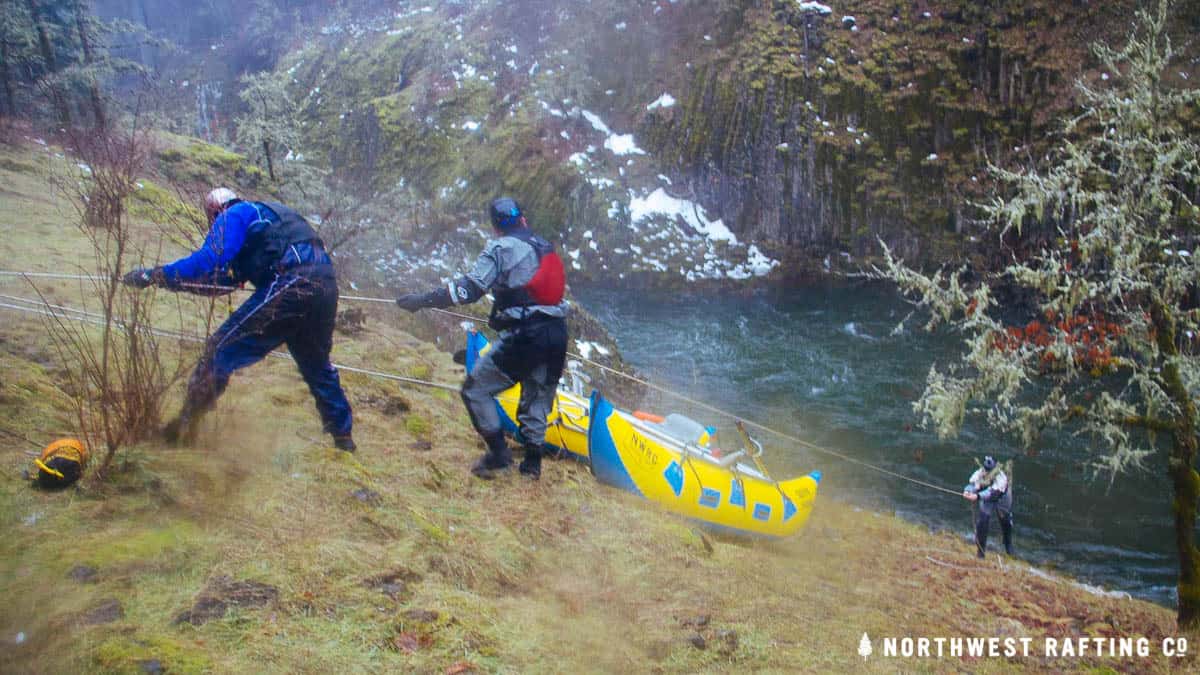
Punchbowl Falls can be portaged by kayakers on the right or lined by rafters on the right if you want to continue down and take out at Tucker Bridge or in town.
Logistics
From Hood River, get yourself to Dee. You’ll cross the East Fork of the Hood here and take your first right. Stay to the right through the intersection and in about a minute you’ll see a parking area for take-out on the right. If you cross another bridge you’ve gone too far.
From take-out drive back the way you came and take a right at the first intersection (Green Road). Stay on Green Road until you hit Lost Lake Road and take a right. Stay on Lost Lake Road until you see a small parking area on the left after Lost Lake Road crosses the Lake Branch. Park here and go boating!
